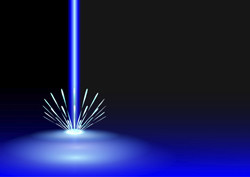Free-electron laser comes closer to reality
Lasers play an important role in research and technology, touching on many key fields from medical imaging to national defence. In particular, the free-electron laser (FEL), which is more versatile and more tuneable, has opened up a whole range of applications. About a decade ago, an even more advanced type of FEL was launched that is able to generate X-rays. Many research centres around the world flourished with this new discovery as they wanted to learn more about the new laser technology and apply it in different ways. The 'Preparatory phase of the IRUVX-FEL consortium' (IRUVX-PP) project worked on harnessing this power by preparing for a new European facility known as EuroFEL. This facility has been conceived to offer complementary sources and instrumentation that are unsurpassed in the world. In this context, EuroFEL partners created a plan to integrate national FEL facilities into a distributed European facility. The plan was designed to fully exploit the complementary features and expertise of individual member facilities and maximise benefits for all involved. The endeavour includes implementation of structures and methods that promote the efficient construction and operation of the EuroFEL facility. The consortium established policies to facilitate access to this state-of-the-art facility, offering world-class service in response to the needs of the research community. It reviewed and defined the core activities of the future EuroFEL and prepared comprehensive reports for establishing the joint facility. This included a detailed description of envisioned activities, mission, budget estimates, internal procedures and more. In more scientific terms, the new FEL technology combines wide and continuously tuneable wavelength radiation with ultra-short pulses and the coherence of lasers, yielding much more power. It covers the terahertz, infrared, visible and ultraviolet spectrum up to hard X-rays, producing extremely short (femtosecond) flashes of light with unprecedented intensities at short wavelengths. FELs are flash cameras for the molecular world, adding the femtosecond time scale to nanometre microscopy. This can be used to observe intricate phenomena and opens up new research opportunities in numerous scientific disciplines, from the physics of atoms, molecules and clusters to plasma physics, chemistry, nanosciences, materials and biomaterials. Overall, preparations for the new facility have involved defining user needs and access, conducting workshops, finding the required human resources and networking with industry. Once the facility is completed, it will lead to the development of novel technologies and applications ranging from micro-electronics to energy.
Keywords
Free-electron laser, laser technology, terahertz, infrared, ultraviolet, femtosecond, plasma physics, nanoscience







